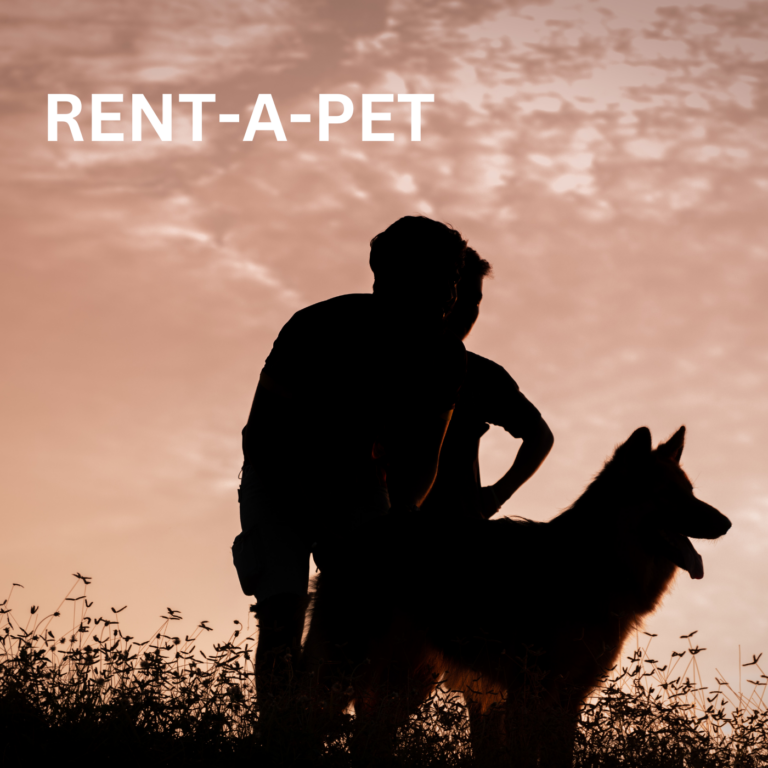Rent-a-Pet: A Business That Brings Joy and Connection
Rent-a-Pet is more than just a business—it’s a transformative way to connect people with the companionship of pets, even if their lifestyle doesn’t allow for full-time ownership. In today’s busy world, many individuals long for the joy and comfort of being around animals but cannot commit to the responsibilities that come with owning one. Rent-a-Pet provides a solution, offering temporary access to furry friends for people who want to enjoy the benefits of pet companionship without the long-term commitment.
Whether it’s for a busy professional, a curious family, or a lonely traveler missing their pets, this business idea is a win-win for humans and animals alike. Here’s how to start a Rent-a-Pet business, make it successful, and create meaningful connections in the process.
Why Rent-a-Pet is a Great Business Idea
1. Rising Demand for Flexible Pet Companionship
Busy schedules, housing restrictions, and financial considerations prevent many people from owning pets full-time. However, the demand for flexible access to pets is growing, driven by:
- Loneliness Epidemic: Studies show that pet companionship reduces stress, anxiety, and feelings of isolation.
- Travelers and Tourists: People visiting new cities often miss their pets at home and look for short-term pet companionship.
2. Emotional and Social Benefits
Pets provide unmatched emotional support. They help people unwind, boost their mood, and create a sense of belonging. Rent-a-Pet gives people these benefits without the permanent responsibility of ownership.
3. Business Potential
The pet care industry is booming, with billions spent annually on pet services. A Rent-a-Pet business taps into this lucrative market while filling a unique gap.
Steps to Start a Rent-a-Pet Business
Step 1: Research and Planning
Before launching your Rent-a-Pet business, conduct thorough research and create a solid business plan.
- Identify Your Target Audience:
- Busy professionals seeking occasional companionship.
- Families considering adopting a pet and wanting to “test” pet ownership.
- Seniors looking for emotional support.
- Travelers and tourists missing their pets.
- Assess Local Demand: Use online surveys, local community groups, and social media to gauge interest in your area.
- Understand Regulations: Check local laws regarding pet rentals. Ensure compliance with animal welfare regulations and necessary business permits.
Step 2: Source Your Pets
The heart of your business is the animals. Ensuring their welfare is crucial.
- Partner with Shelters and Rescues: Collaborate with local shelters to provide animals for your service. This partnership can also promote adoption.
- Recruit Pet Owners: Work with pet owners willing to share their pets for short-term companionship. Offer incentives like compensation or discounted pet services.
- Select Suitable Pets: Choose animals with calm temperaments that are well-socialized and comfortable around strangers.
Step 3: Develop a Safety and Welfare Policy
Animal welfare should be your top priority. Create clear policies to ensure the safety and comfort of both pets and clients.
- Health Checks: Ensure all animals are vaccinated and regularly checked by a veterinarian.
- Training Requirements: Provide basic obedience training for pets, ensuring they behave well in new environments.
- Screen Clients: Vet potential renters to ensure they have a safe and suitable environment for the animal.
- Insurance: Obtain liability insurance to protect your business, clients, and pets.
Designing Your Rent-a-Pet Service
1. Service Options
Offer flexible rental packages tailored to different client needs:
- Hourly Rentals: Ideal for short-term companionship or casual walks.
- Day Rentals: Suitable for families or individuals who want to spend a full day with a pet.
- Weekend Rentals: Allow clients to experience pet ownership over a weekend.
2. Pricing Structure
Set competitive pricing based on local market conditions. Factors to consider include:
- The type of animal (e.g., dogs, cats, rabbits).
- Rental duration.
- Additional services like pet supplies or delivery/pickup of the pet.
3. Additional Services
Upsell with complementary offerings, such as:
- Pet care tutorials or training sessions.
- Delivery and pickup services for convenience.
- Pet supplies (food, toys, leashes).
Building Your Rent-a-Pet Business
Step 1: Create a Strong Brand
Your branding should convey trust, joy, and love for animals.
- Business Name: Choose a memorable name that highlights the connection between people and pets (e.g., “PawTime Companions” or “Furry Friends on Call”).
- Logo and Design: Use warm, inviting colors and playful imagery to attract customers.
- Mission Statement: Emphasize your commitment to animal welfare and the joy of pet companionship.
Step 2: Build an Online Presence
A professional online presence is essential for attracting customers and managing bookings.
- Website:
- Create a user-friendly website with clear information about your services, pricing, and policies.
- Include a booking system with availability calendars.
- Add customer reviews and testimonials for social proof.
- Social Media:
- Use platforms like Instagram and Facebook to share photos of happy pets and customers.
- Post educational content about pet care and the benefits of animal companionship.
- Engage with followers through polls, Q&A sessions, and contests.
Step 3: Market Your Business
- Local Marketing: Distribute flyers at community centers, pet stores, and veterinary clinics.
- SEO Optimization: Optimize your website with keywords like “Rent a pet near me,” “short-term pet companionship,” and “pet rental services.”
- Partnerships: Collaborate with travel agencies, hotels, and senior living communities to promote your service.
- Referral Program: Encourage satisfied clients to refer others by offering discounts or free hours.
Ensuring Customer and Pet Satisfaction
1. Onboarding Process
Provide new clients with a comprehensive onboarding process:
- Educate them about pet care basics.
- Share tips on bonding with their rented pet.
- Offer a starter kit with essentials like food and toys.
2. Follow-Up
Check in with clients after their rental to gather feedback and ensure the pet was returned safely. Use this information to improve your services.
Scaling Your Rent-a-Pet Business
Once your business is established, explore opportunities for growth:
- Expand Your Reach: Offer services in nearby cities or regions.
- Add More Pet Options: Include exotic animals (e.g., birds, reptiles) or focus on specific breeds for niche audiences.
- Create a Subscription Model: Offer memberships for frequent renters, providing perks like priority booking or discounts.
- Host Events: Organize meet-and-greet events for renters and pets to build community and brand loyalty.
Challenges and Solutions
1. Animal Welfare Concerns
Ensure strict adherence to safety and health standards to address concerns about animal welfare.
2. Client Trust
Build trust by providing transparent policies, showcasing positive reviews, and maintaining a professional image.
3. Regulatory Hurdles
Stay informed about local laws and adjust your operations to meet legal requirements.
Why Rent-a-Pet Matters
A Rent-a-Pet business is more than a way to make money—it’s a way to bring happiness, connection, and purpose into people’s lives. It’s also an opportunity to promote responsible pet care and adoption, benefiting the animals as much as the clients.
By creating a service that prioritizes safety, convenience, and joy, you can build a thriving business while making a positive impact on your community.
Conclusion
Rent-a-Pet is an innovative and heartwarming business idea that bridges the gap between people and pets. With careful planning, a commitment to animal welfare, and effective marketing, you can create a service that resonates with a diverse audience, from busy professionals to curious families.
Start by building strong relationships with shelters and pet owners, designing flexible rental packages, and creating an engaging online presence. With the right approach, your Rent-a-Pet business can become a source of joy and connection for both your clients and the animals they care for.



